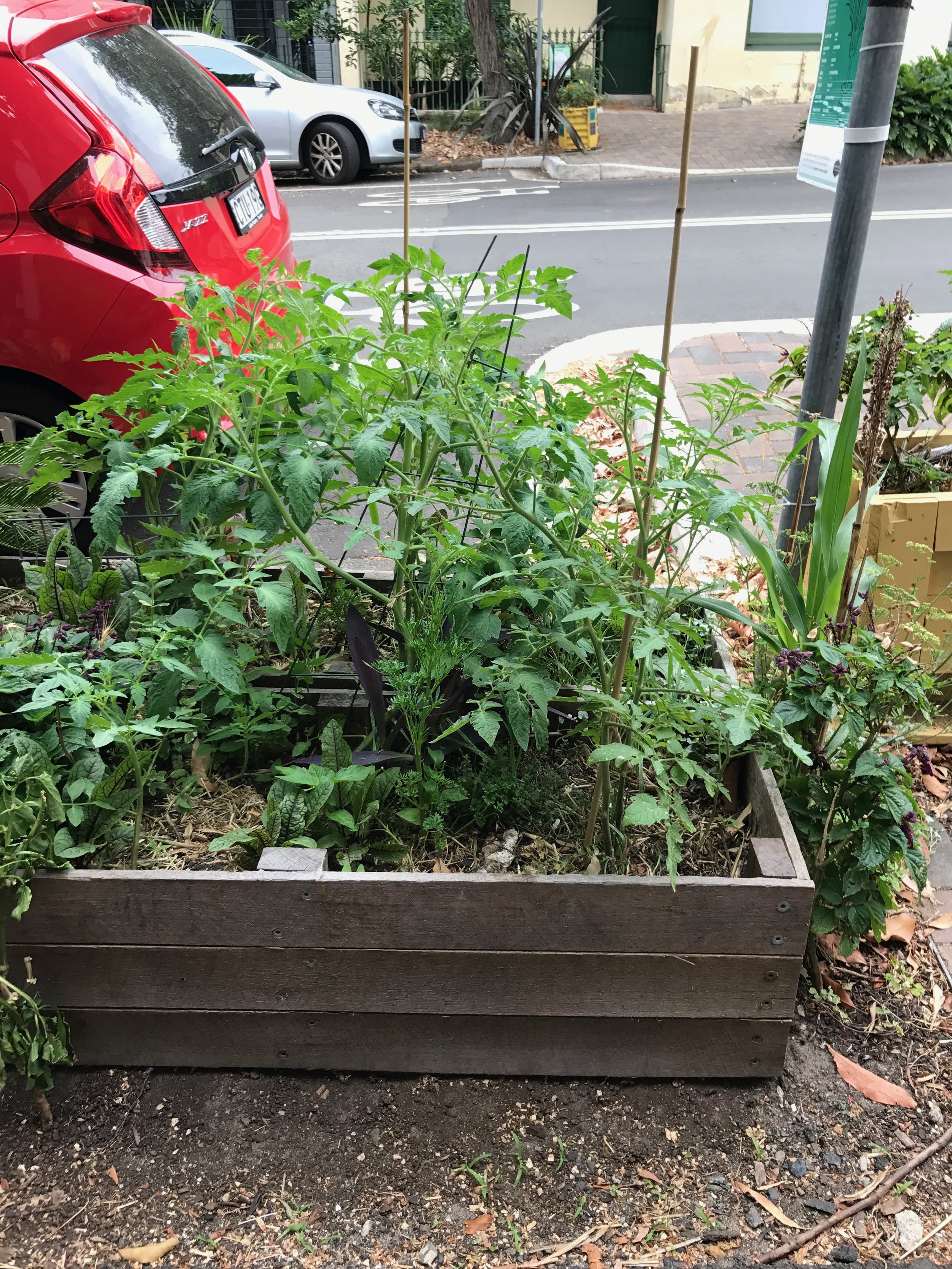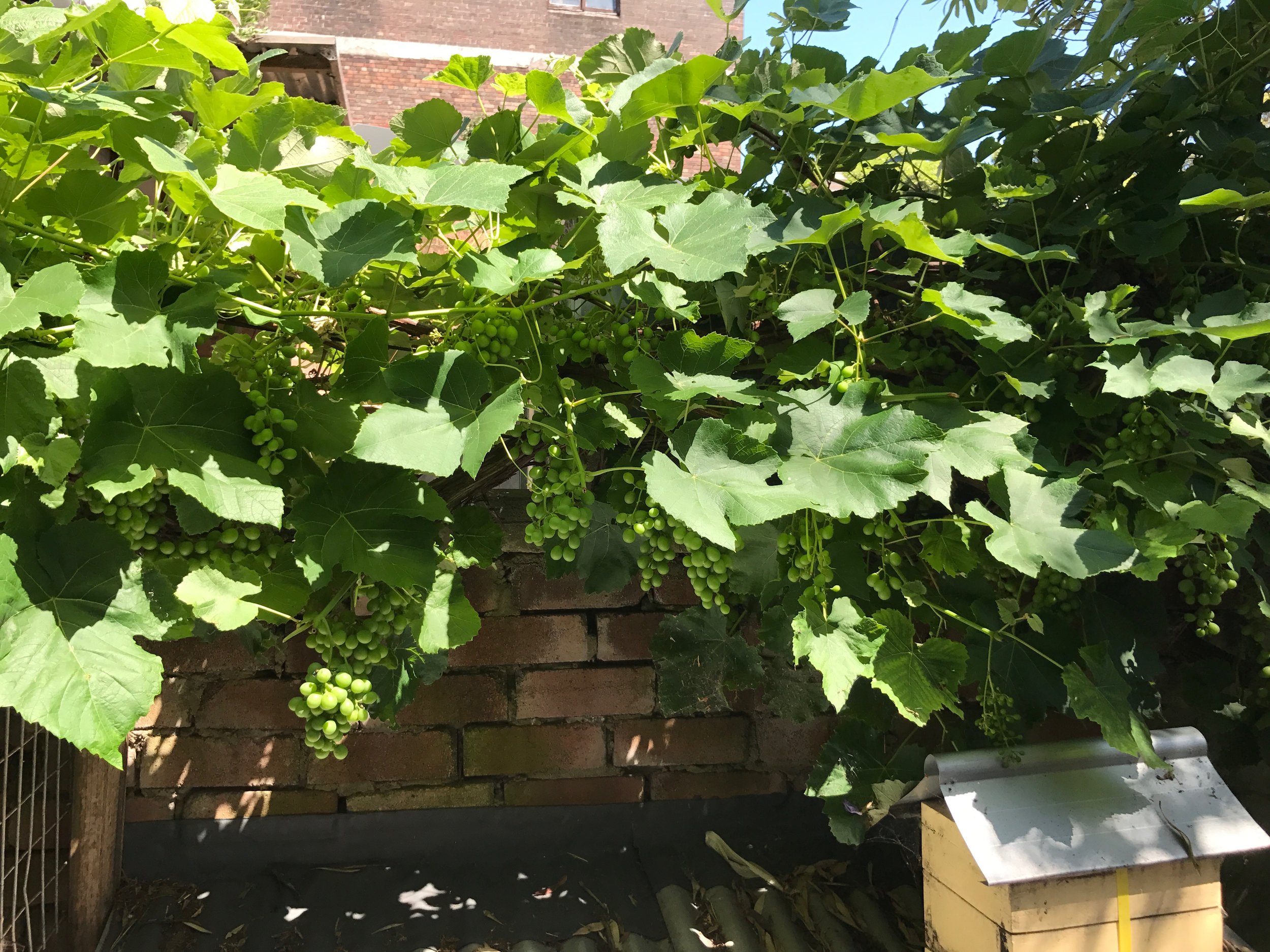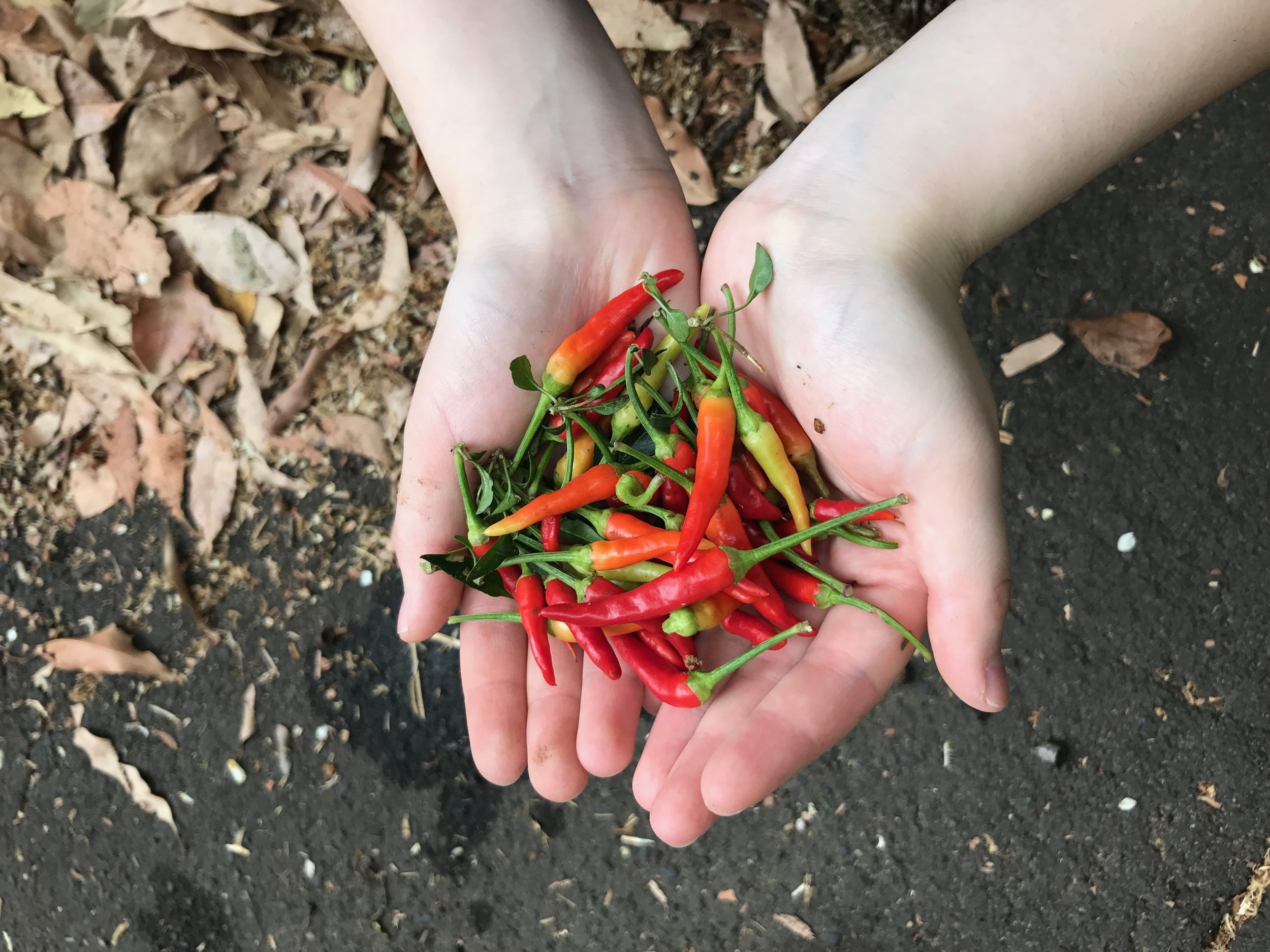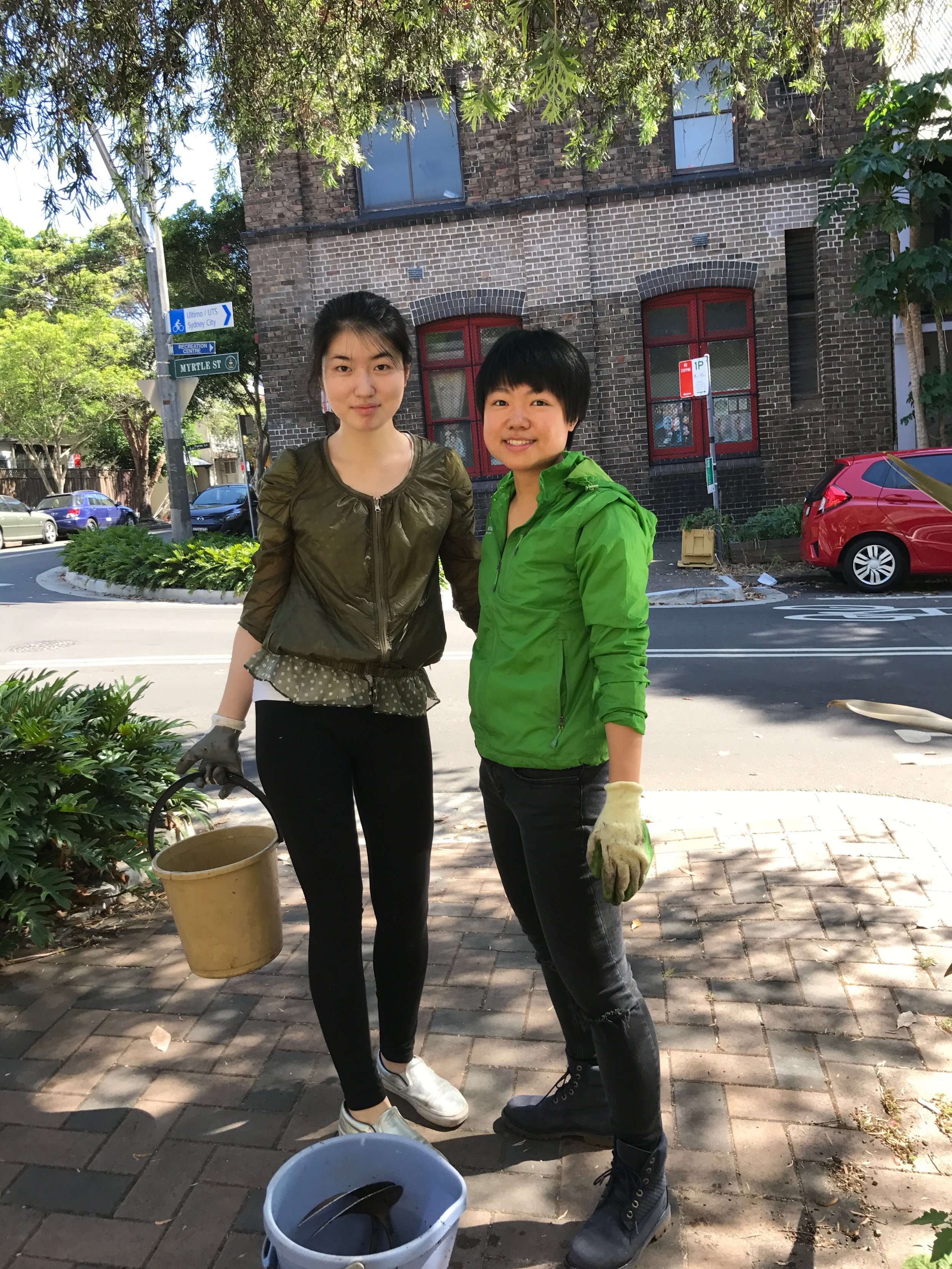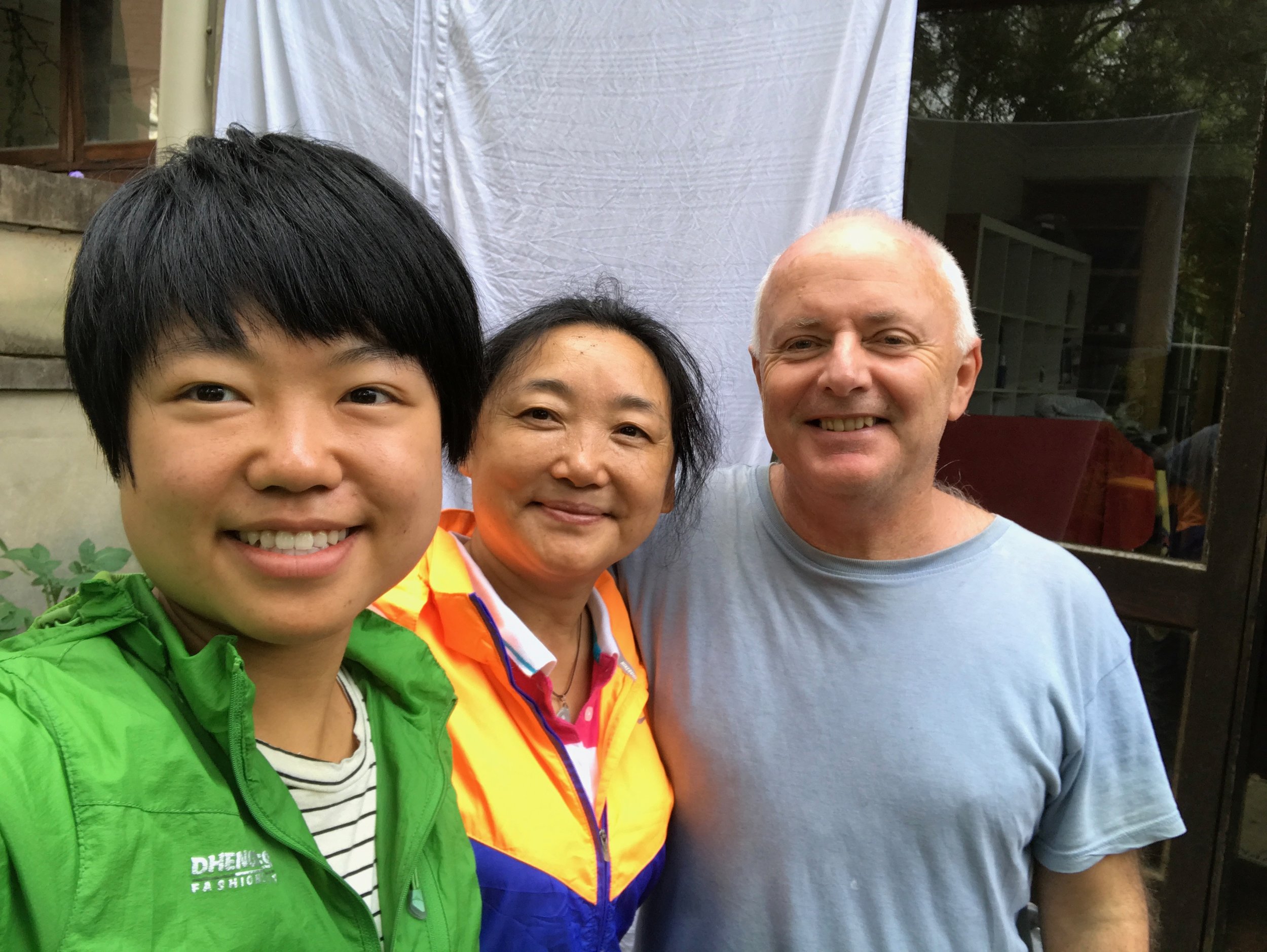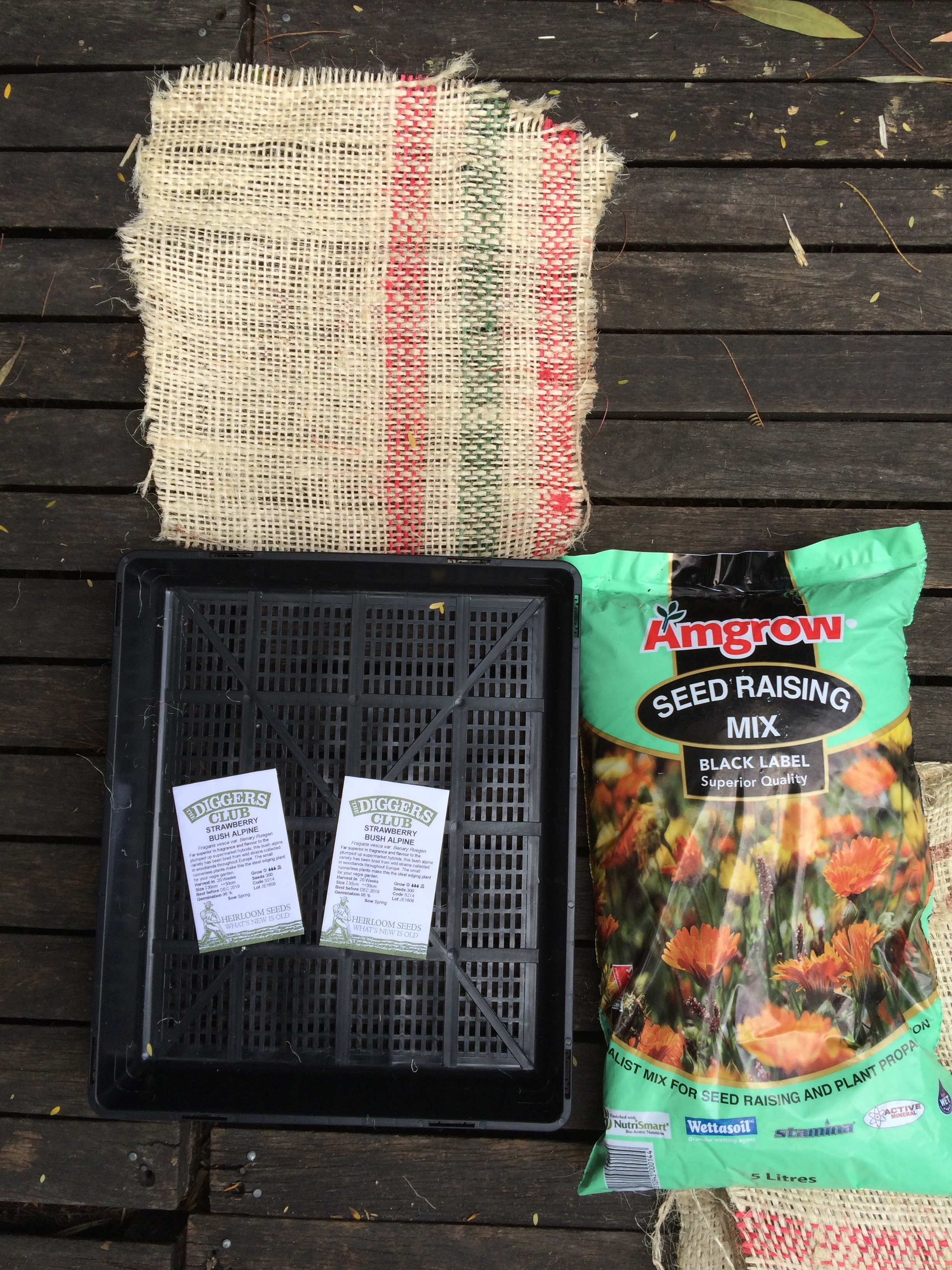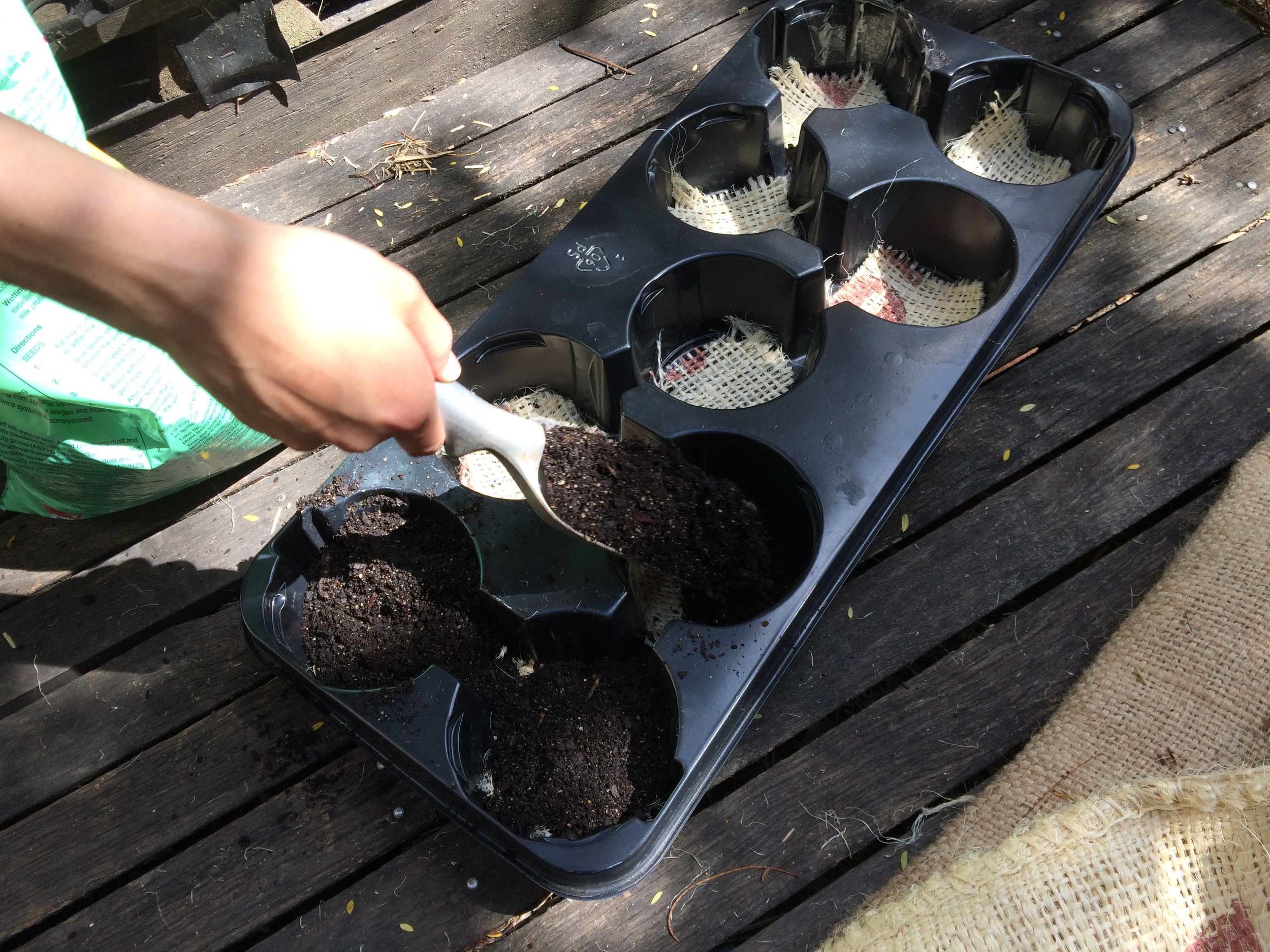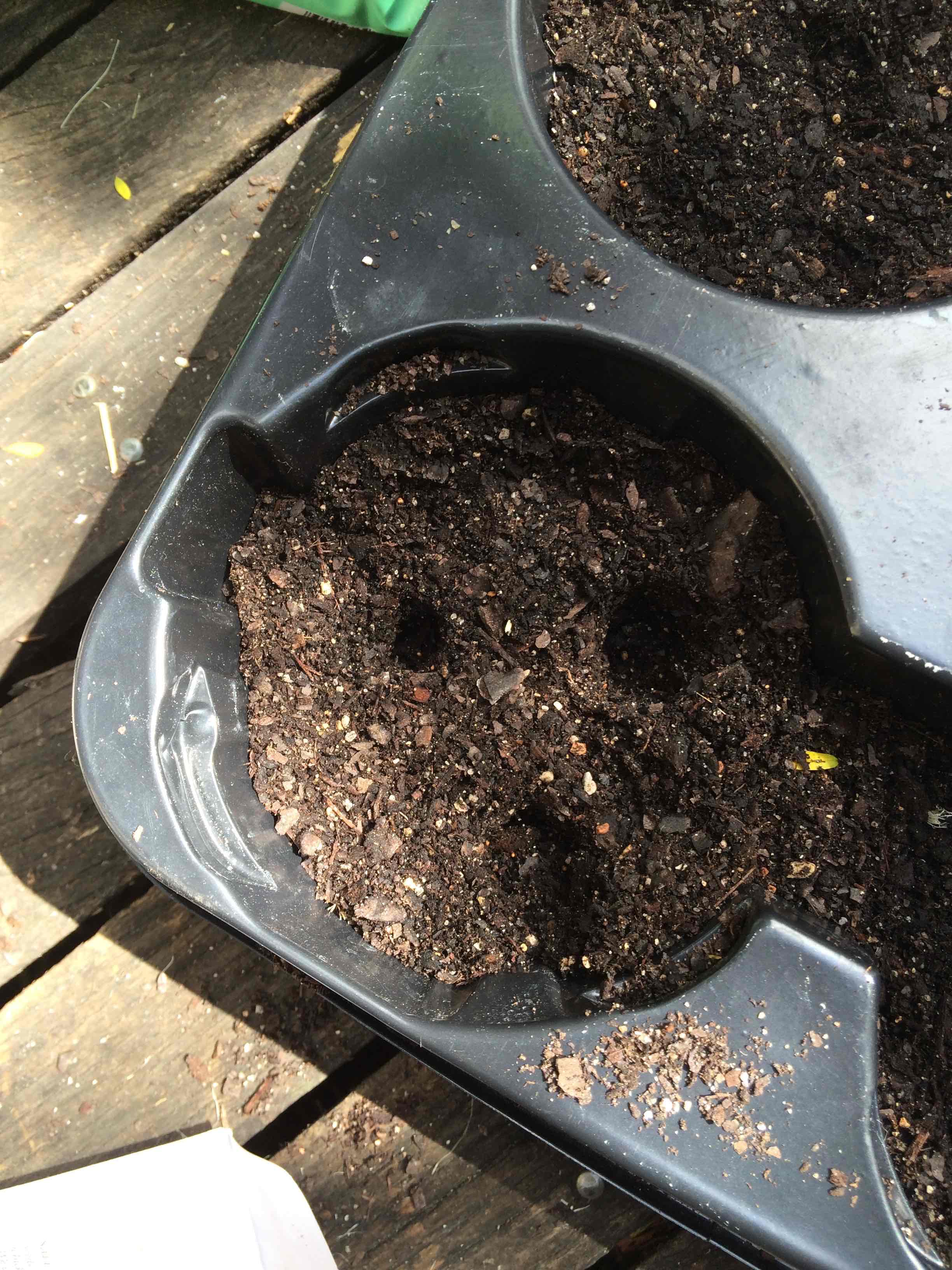Weekly Report 29th November
By Jessica Tang
This week we have a new gardener, Jessica’s mother Amy, came to help in the community garden. Since Chinese students and their parents are volunteering in the community garden, this report will be translated into a Chinese version.
This week we have transplanted some young tomato plants and peas in the raised bed gardens, watering the plants with compost juice which made from composts, mulches and recycled water. Surprisingly, some seeds from compost has successfully germinated in the raised bed garden, and will be transplanted in few weeks.
The grapes at the backyard of Michael’s house are growing very well, they haved formed a lovely shelter for chooks. As the plants are bearing fruit, their stems are needed to be pruned to reduce the nutrients intake. To make the compost juice, we chopped the unwanted stems of grapes and soaked into water for 3 days. These grapes are given to a local cafe for it to make verjuice. (https://en.wikipedia.org/wiki/Verjuice)
The chili peppers in our community garden are ready to harvest. Healthy and delicious, these spice can be used fresh in salad and stir-fries. Having productive gardens on streets means it only takes you few-minute walk to get the fresh vegetables and fruit. It decreased the money spending on transportation and reduced the pollution from transporting and packaging. The plants also consume the wasted vegetable and fruit. Take the compost as an example, the ingredients of compost all came from unwanted food and plants which are full in nutrients. Instead of spending time and money to clean the waste, we make it into fertilizer for plants and they will provide us food as return. An example of a cafe which accepts surplus fruit and veggies from local urban farmers is Cornersmith: http://www.cornersmith.com.au/
Chippendale社区花园是一个富有特色的多产花园。我们将本地的水果、蔬菜种植在居民区街道上,利用雨水浇灌,打造了一片美丽的绿色街道,也为居民提供了健康环保又便捷的食物来源。在Chippendale, 我们提倡环保与废物再利用。我们将丢弃的食物与植物枝叶制作成混合肥料,并且收集雨水和废水,将其再次利用于花园的灌溉与施肥中。这样做不仅减少了清理垃圾与脏水的成本,还能够带来一定的生产效益。
作为一个开放性的公共绿色花园,我们欢迎所有热心的居民。这个星期,中国学生Jessica和她的母亲Amy, 还有Mia同学一同前来帮忙。在Michael的指导下,她们定期来浇灌植物,修剪枝叶,移植花草,制作混合肥料。在大家的共同努力下,社区花园得以良好的运作。我们努力将Chippendale社区花园打造成一个有教育意义的典范,希望有越来越多的人加入环保行动中来。
